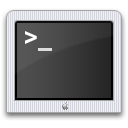 |
MediaPipe CLI |
 |
MediaPipe CLI |
|
The MediaPipe Command-Line Interface (CLI) provides a straight forward way to use the MediaPipe Framework. You can either build or load a pipeline and execute it from the terminal. This makes it easy for you to use other tools, such as Perl or AppleScript, to automate MediaPipe. RNC's MissingMpegTools (MMT) is a perfect example of how the command-line version of MediaPipe can be used through scripting. The parameters to mediapipe look like this: mediapipe <selector> [<arguments>] The Selectors-list"-list" lists all the pipes that mediapipe found and loaded. If you have pipes installed in multiple locations, you might want to look at the path of the pipe to see which one has been loaded. Eg. -attributes"-attributes" lists the attribute which can be set for a given pipe. It has 1 argument, the name (or id) of the pipe for which you want the attributes to be listed.Eg. -pipeline"-pipeline" is used to build, load and/or save a pipeline. The arguments for the "-pipeline" selector look like this:mediapipe -pipeline [flags] [pipe attr=val] [! pipe attr=val] ... Note that the '!' has the effect of joining the output of one pipe with the input of the following one The possible flags are:
Here are a few examples: Building and Executing a Pipeline Building and Saving a Pipeline Loading and Executing a Pipeline |
MediaPipe is being developed by
Gaspard Petit and Antoine Missout
This site was last modified on September 28, 2002.